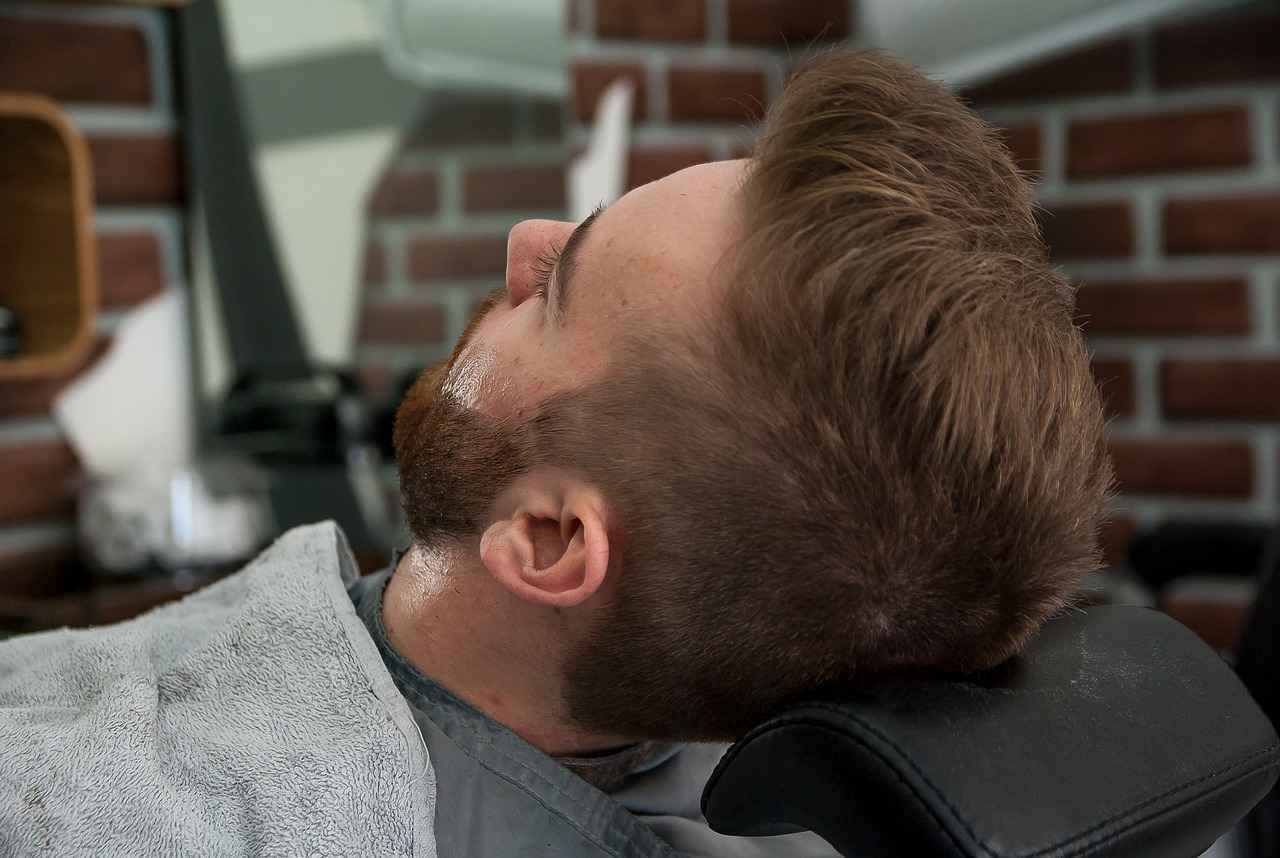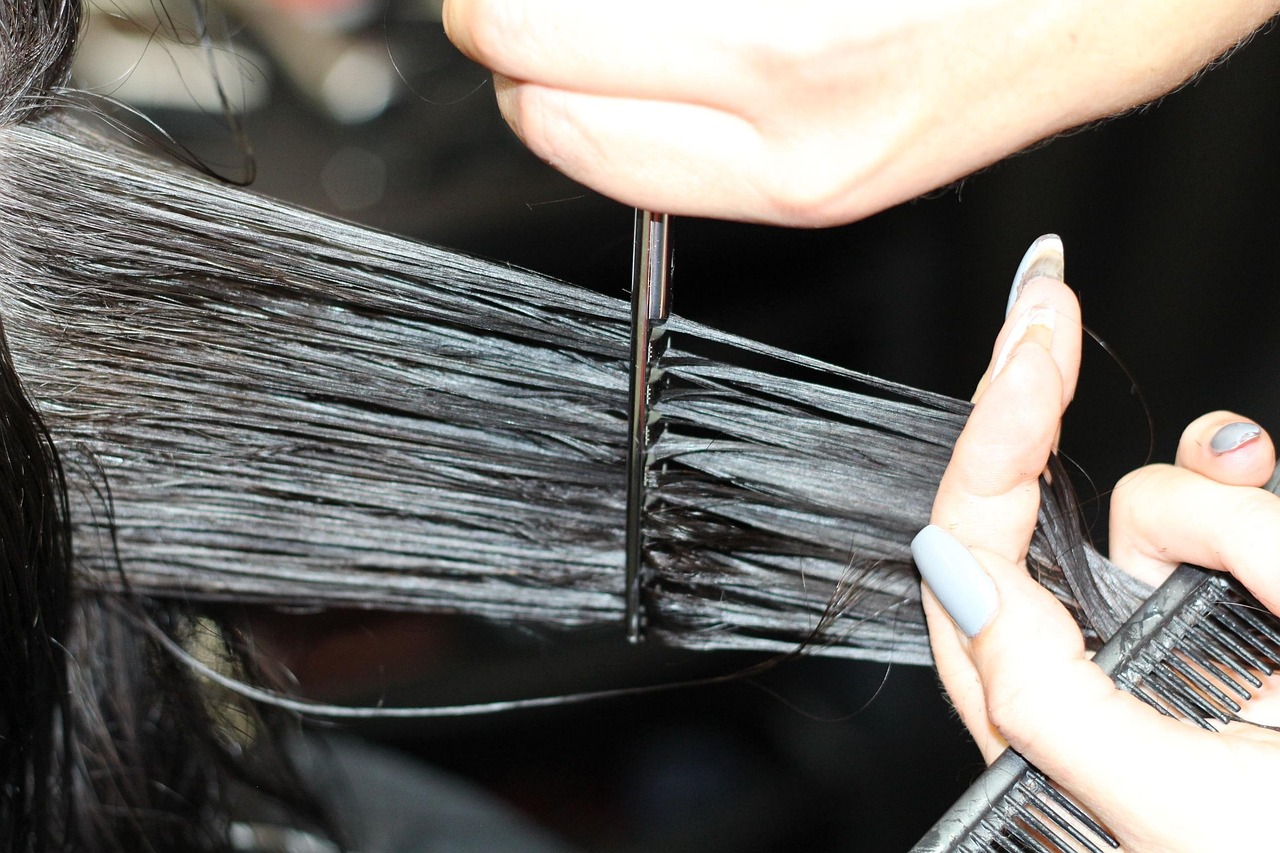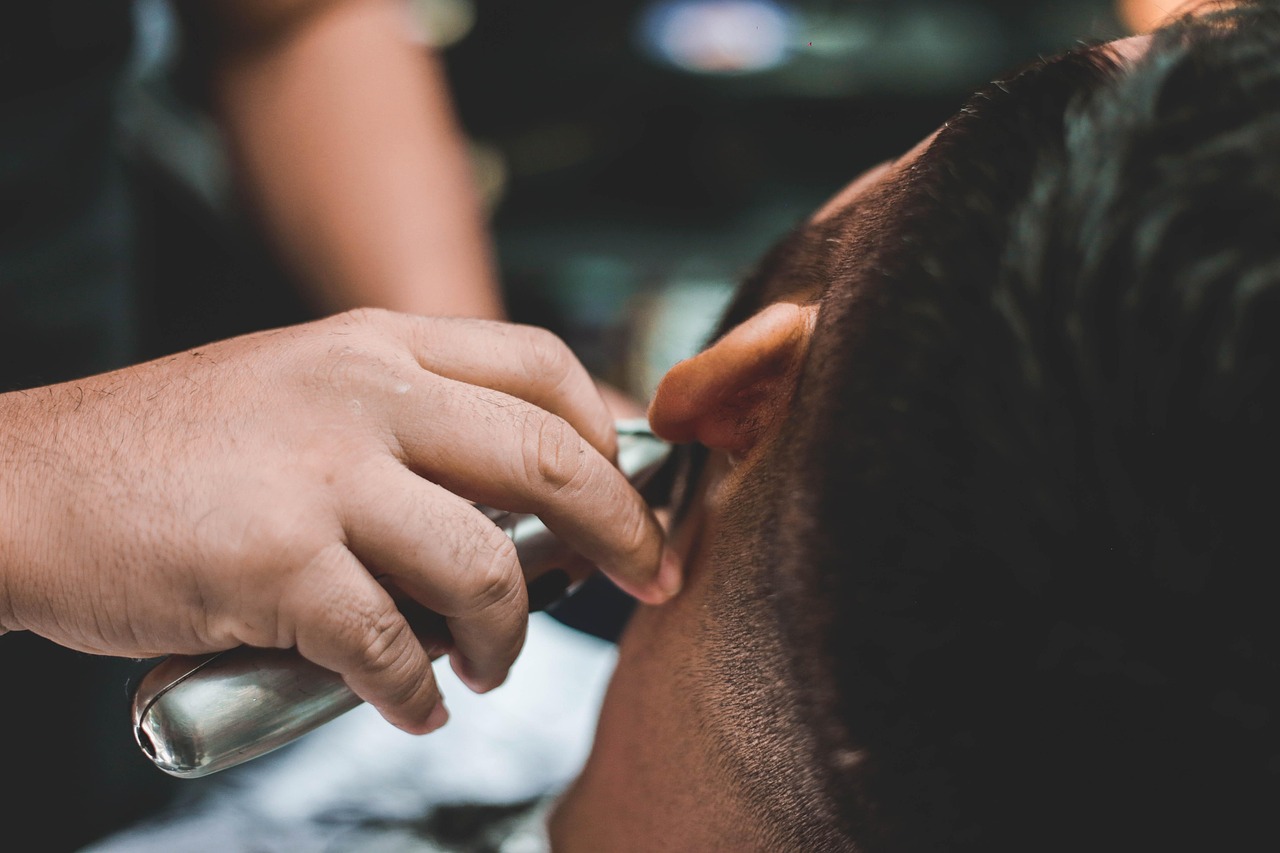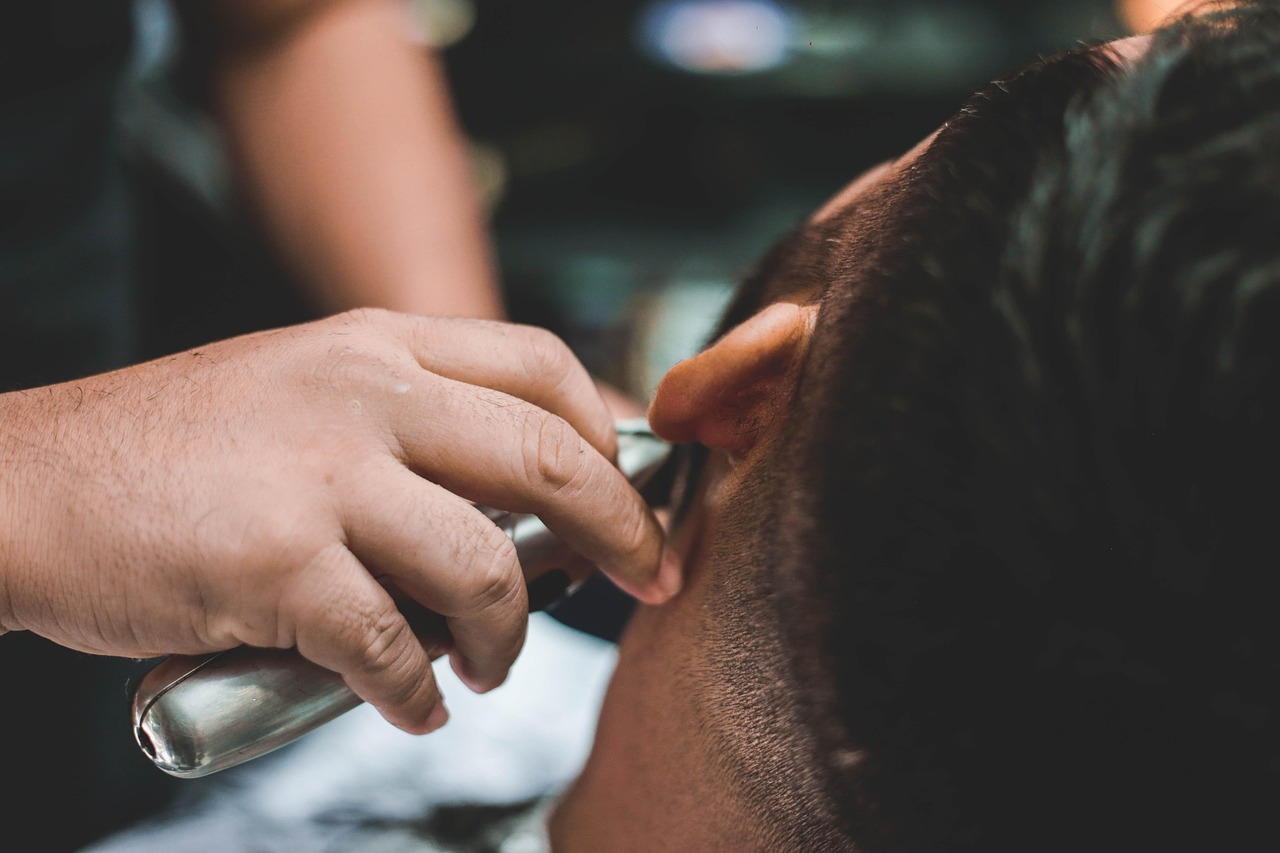This article aims to clarify common misconceptions surrounding hair transplant clinics, providing accurate information to help potential patients make informed decisions about their hair restoration options.
Myth 1: Hair Transplants Are Only for Older Men
It is a common belief that hair transplants are solely for older men; however, this is a misconception. Hair loss can affect individuals of all ages and genders. In fact, many younger individuals, including women, seek hair restoration solutions.
Myth 2: Hair Transplants Look Unnatural
Another prevalent myth is that hair transplants result in an unnatural appearance. With the latest advancements in techniques, skilled professionals can achieve results that look remarkably natural. This is especially true with methods like Follicular Unit Extraction (FUE), which allows for a more refined hairline.
Understanding Follicular Unit Extraction (FUE)
FUE is a modern technique that minimizes scarring and enhances the natural look of the hairline. This method challenges the belief that transplants look fake.
Benefits of FUE
- Less recovery time
- More discreet results
Limitations of FUE
While FUE has many advantages, it may not be suitable for everyone, particularly those with extensive hair loss or limited donor hair availability.
Myth 3: Hair Transplants Are Painful
Many prospective patients fear the pain associated with hair transplants. However, modern techniques and anesthesia make the procedure relatively comfortable for most individuals.
Managing Pain During the Procedure
Patients typically receive local anesthesia, which numbs the scalp, ensuring minimal discomfort during the procedure.
Post-Procedure Pain Management
After the procedure, mild discomfort can occur, but it is often manageable with over-the-counter pain relief and proper aftercare instructions.
Myth 4: Results Are Immediate
Another common misconception is that the results of hair transplants are visible immediately. In reality, hair growth takes time, and patience is essential for optimal results.
Understanding the Hair Growth Cycle
Hair growth occurs in cycles, and it can take several months for transplanted hair to start growing, which may lead to unrealistic expectations among patients.
Timeline for Visible Results
Typically, patients can expect to see noticeable improvements within 6 to 12 months post-procedure, emphasizing the importance of setting realistic expectations.
Myth 5: Hair Transplants Are a One-Time Solution
Many believe that hair transplants are a permanent fix for hair loss. However, hair loss can continue even after a transplant, necessitating further treatments down the line.
Understanding Progressive Hair Loss
Hair loss is often progressive, meaning that even after a successful transplant, patients may require additional procedures to maintain their desired look.
Maintenance and Follow-Up Care
Regular follow-up care and maintenance treatments can help sustain results, ensuring that patients remain satisfied with their hair restoration over time.
Myth 6: All Clinics Provide the Same Quality of Care
Not all hair transplant clinics are created equal. Research and due diligence are essential to finding a reputable clinic that offers high-quality care and experienced professionals.
Choosing the Right Clinic
Selecting a clinic involves considering factors such as the surgeon’s credentials, patient reviews, and the technology used in procedures.
Importance of Consultations
Consultations allow potential patients to assess the clinic’s environment, ask questions, and understand the process, helping ensure they make an informed choice.
Conclusion: Debunking Myths for Informed Decisions
Understanding the realities of hair transplant clinics is crucial for anyone considering this option. By debunking these myths, potential patients can make informed decisions and achieve their desired hair restoration outcomes.

Myth 1: Hair Transplants Are Only for Older Men
The Biggest Myths About Hair Transplant Clinics Debunked
This article aims to clarify common misconceptions surrounding hair transplant clinics, providing accurate information to help potential patients make informed decisions about their hair restoration options.
It is a widespread belief that hair transplants are solely reserved for older men experiencing significant hair loss. However, this is a misconception that overlooks the reality of hair loss affecting individuals across various age groups and genders. In fact, hair loss can begin as early as the late teens or early twenties for some individuals, regardless of their gender.
Women, too, experience hair thinning and loss due to various factors such as hormonal changes, genetics, and medical conditions. The notion that hair transplants are exclusively for older men can discourage younger individuals and women from seeking effective solutions for their hair loss.
Moreover, advancements in hair transplant techniques have made it possible for younger patients to consider this option successfully. Techniques like Follicular Unit Extraction (FUE) and Follicular Unit Transplantation (FUT) allow for more natural results, catering to a broader demographic. These methods can be tailored to suit the specific needs of younger patients, providing them with a chance to restore their confidence and achieve a fuller head of hair.
It’s also essential to recognize that early intervention can lead to better outcomes. Addressing hair loss sooner rather than later can result in more effective restoration, making it vital for individuals of all ages to consult with professionals if they notice signs of thinning hair.
In conclusion, the belief that hair transplants are only for older men is a myth that needs to be debunked. Hair loss is a universal issue, and individuals of all ages and genders should feel empowered to explore hair restoration options.

Myth 2: Hair Transplants Look Unnatural
A prevalent myth surrounding hair transplants is the belief that they result in an unnatural appearance. Many potential patients worry that they will end up with a hairline that looks artificial or overly dense. However, this misconception is increasingly being debunked due to significant advancements in hair restoration techniques.
Modern hair transplant procedures, particularly Follicular Unit Extraction (FUE), have revolutionized the way hair restoration is approached. This technique involves extracting individual hair follicles from a donor area and implanting them into the balding areas of the scalp. The precision of this method allows for a more natural hairline and minimizes scarring, addressing concerns about the appearance of transplanted hair.
Moreover, skilled professionals are trained to consider various factors, such as the natural growth pattern of hair and the individual’s facial structure, which further enhances the authenticity of the results. The artistry involved in hair transplant procedures cannot be overstated; it is not merely a medical procedure but also a form of cosmetic enhancement that requires an eye for detail.
In addition to FUE, another method known as Follicular Unit Transplantation (FUT) can also yield natural-looking results. This technique is particularly beneficial for individuals with more extensive hair loss, as it allows for the transplantation of larger quantities of hair follicles at once, ensuring a fuller look.
Ultimately, the key to achieving a natural appearance lies in choosing a reputable clinic and a qualified surgeon. Prospective patients should conduct thorough research and consult with multiple professionals to find the right fit for their needs. By doing so, they can significantly reduce the likelihood of unsatisfactory results.
In conclusion, while the myth that hair transplants look unnatural persists, advancements in techniques and the expertise of skilled surgeons have made it possible to achieve results that are both natural-looking and satisfying. Understanding these realities can help potential patients make informed decisions about their hair restoration journey.
Understanding Follicular Unit Extraction (FUE)
is crucial for anyone considering hair restoration. This innovative technique has transformed the landscape of hair transplants, offering a solution that not only looks natural but also minimizes visible scarring. Unlike traditional methods, FUE involves extracting individual hair follicles from a donor area and implanting them into the thinning or balding regions of the scalp.
One of the key advantages of FUE is its ability to create a more natural-looking hairline. Skilled professionals can strategically place hair follicles in a manner that mimics the natural growth patterns of hair. This attention to detail helps to challenge the long-standing belief that hair transplants appear fake. Patients can achieve results that blend seamlessly with their existing hair, enhancing their overall appearance.
Moreover, FUE significantly reduces scarring compared to older methods like Follicular Unit Transplantation (FUT). In FUT, a strip of scalp is removed, which can lead to a linear scar. In contrast, FUE leaves tiny, dot-like scars that are less noticeable and allow patients to wear their hair short without fear of visible scarring.
Another notable benefit of FUE is the shorter recovery time. Patients typically experience less discomfort and can return to their daily activities quicker than with traditional methods. This makes FUE an appealing option for those with busy lifestyles who want to minimize downtime.
However, it is essential to recognize that FUE may not be the ideal solution for everyone. Individuals with extensive hair loss or limited donor hair availability might find that other methods, such as FUT, could be more effective for their specific situation.
In conclusion, Follicular Unit Extraction represents a significant advancement in hair restoration techniques. By providing a more natural appearance and reducing scarring, FUE is changing the way people perceive hair transplants. As with any medical procedure, it is vital to consult with a qualified professional to determine the best approach for your individual needs.
Benefits of FUE
Benefits of Follicular Unit Extraction (FUE)
Follicular Unit Extraction (FUE) has gained immense popularity in the realm of hair restoration due to its numerous advantages. This innovative technique not only enhances the aesthetic outcomes but also prioritizes patient comfort and convenience. Below are some of the most significant benefits of FUE:
- Minimized Recovery Time: One of the most appealing aspects of FUE is the reduced recovery time. Patients often return to their daily activities within a few days, as the procedure is less invasive compared to traditional methods.
- Discreet Results: FUE allows for a more natural-looking hairline, which is crucial for those seeking discreet results. The extraction of individual hair follicles minimizes visible scarring, making it difficult for others to detect that a hair transplant has occurred.
- Less Pain and Discomfort: Modern techniques and local anesthesia used during FUE contribute to a more comfortable experience for patients. Many report minimal pain during and after the procedure, which enhances overall satisfaction.
- Versatility: FUE is suitable for various hair types and can be used to restore hair in different areas of the body, including the beard and eyebrows. This versatility makes it a preferred choice for many individuals.
- Lower Risk of Complications: Since FUE does not involve a large incision, there is a lower risk of complications such as infections or excessive bleeding, which can occur with more invasive procedures.
In conclusion, the benefits of FUE make it a compelling option for those considering hair restoration. With its reduced recovery time, discreet results, and overall patient comfort, FUE continues to be a popular choice among individuals seeking a natural look.
Limitations of FUE
Limitations of Follicular Unit Extraction (FUE) are essential to understand for anyone considering this hair restoration technique. While FUE has gained popularity for its natural-looking results and minimal scarring, it is not without its constraints. This section will explore the factors that may affect the suitability of FUE for potential patients.
One of the primary considerations is the extent of hair loss. Individuals with extensive hair loss may find that FUE is not the best option for them. This technique relies on the availability of healthy donor hair follicles, typically located at the back and sides of the scalp. If a patient has significant balding, the limited donor supply may not provide sufficient hair for a successful transplant, leading to suboptimal results.
In addition, patients with thin or fine hair may face challenges when undergoing FUE. The technique requires a certain density of hair follicles to achieve a fuller appearance. If the donor hair is sparse, the results may appear less satisfactory, making it crucial for patients to have realistic expectations about their outcomes.
| Factors Impacting FUE Suitability | Details |
|---|---|
| Extent of Hair Loss | Limited donor hair may not suffice for extensive balding. |
| Hair Texture | Thin or fine hair may yield less satisfactory results. |
| Scalp Condition | Scarring or skin conditions can complicate the procedure. |
Moreover, individuals with certain scalp conditions or dermatological issues may also find FUE unsuitable. Conditions like psoriasis or severe scarring can hinder the healing process and affect the overall success of the transplant. Therefore, a thorough evaluation by a qualified professional is critical before proceeding with FUE.
In conclusion, while FUE offers numerous advantages, it is essential for potential candidates to recognize its limitations. Consulting with a skilled hair restoration specialist can provide valuable insights into whether FUE is the right choice based on individual circumstances and hair loss patterns.
Understanding Follicular Unit Transplantation (FUT)
Follicular Unit Transplantation (FUT) is a well-established hair restoration method that has gained popularity for its ability to deliver natural-looking results, especially for individuals experiencing significant hair loss. This technique challenges the widespread belief that only Follicular Unit Extraction (FUE) is effective in treating hair loss.
In FUT, a strip of scalp is surgically removed from the donor area, typically at the back of the head. The hair follicles are then carefully dissected into follicular units, which consist of one to four hairs each. This meticulous process allows for a high density of hair to be transplanted in a single session, making FUT an excellent choice for patients with extensive hair loss.
Benefits of FUT
- High Hair Density: FUT can provide a greater number of grafts in one procedure, which is particularly beneficial for those with advanced hair loss.
- Cost-Effectiveness: Generally, FUT is more affordable than FUE, as it requires less time and fewer resources during the procedure.
- Natural Results: When performed by skilled surgeons, FUT can yield results that blend seamlessly with existing hair.
Considerations for FUT
- Scarring: A linear scar may be left at the donor site, which can be a concern for some patients. However, this scar is often easily concealed by surrounding hair.
- Recovery Time: The healing process may take longer compared to FUE, requiring patients to follow specific aftercare instructions to ensure optimal recovery.
In conclusion, FUT is a viable option for individuals with significant hair loss, offering many advantages that can lead to satisfactory outcomes. By understanding the benefits and considerations associated with this method, potential patients can make informed decisions regarding their hair restoration journey.

Myth 3: Hair Transplants Are Painful
Many prospective patients harbor fears regarding the pain associated with hair transplants. However, it is essential to understand that modern medical advancements have significantly transformed the experience of hair restoration procedures. With the use of advanced techniques and effective anesthesia, most individuals find the process to be relatively comfortable.
Understanding the Pain Management Techniques
- Local Anesthesia: Before the procedure begins, patients are administered local anesthesia. This numbs the scalp, ensuring that any discomfort during the procedure is minimized.
- Advanced Techniques: Techniques such as Follicular Unit Extraction (FUE) and Follicular Unit Transplantation (FUT) have been refined to reduce pain and enhance comfort.
Post-Procedure Comfort
After the procedure, some patients may experience mild discomfort or tenderness in the treated area. However, this is typically manageable with over-the-counter pain relief medications and following the aftercare instructions provided by the clinic.
Real Experiences from Patients
Many patients report that their fears of pain were unfounded. Here are some common sentiments:- "I was surprised at how little discomfort I felt during the procedure."- "The recovery was much easier than I anticipated; I only needed pain relief for a couple of days."
Conclusion
In summary, while the fear of pain can deter potential patients from considering hair transplants, the reality is that modern practices prioritize patient comfort. With effective pain management strategies in place, most individuals find the procedure to be much less painful than expected, allowing them to focus on the positive outcomes of their hair restoration journey.
Managing Pain During the Procedure
When considering a hair transplant, one of the most common concerns for potential patients is the pain associated with the procedure. However, advancements in medical technology and anesthesia techniques have significantly improved the comfort level during hair restoration procedures.
Prior to the procedure, patients are typically administered local anesthesia to the scalp. This method effectively numbs the area, ensuring that individuals experience minimal discomfort throughout the process. The use of local anesthesia is a standard practice in many clinics, as it allows patients to remain awake and alert during the procedure, while also ensuring that they do not feel any pain.
In addition to local anesthesia, many clinics now offer sedation options for patients who may feel anxious or uncomfortable. This can help create a more relaxed environment, making the experience more pleasant. It’s important for patients to communicate their comfort levels and any concerns with their healthcare provider before the procedure begins.
After the procedure, some patients may experience mild discomfort or soreness in the treated area. This is typically manageable with over-the-counter pain relief medications, such as ibuprofen or acetaminophen. Surgeons will provide detailed aftercare instructions to help ensure a smooth recovery, including recommendations for managing any post-procedure pain.
In summary, while the fear of pain can be a significant deterrent for many considering hair transplants, modern techniques and effective pain management strategies have made the procedure much more comfortable. Understanding the pain management options available can help alleviate concerns and lead to a more positive experience overall.
Post-Procedure Pain Management
After undergoing a hair transplant procedure, it is common for patients to experience some level of discomfort. This mild pain is typically manageable and can be effectively addressed with appropriate care and medications.
- Understanding Discomfort: Most patients report a sensation of tightness or mild soreness in the scalp area. This is a normal part of the healing process.
- Over-the-Counter Pain Relief: Many individuals find relief using over-the-counter pain medications such as ibuprofen or acetaminophen. These medications can help alleviate discomfort without the need for stronger prescriptions.
- Following Aftercare Instructions: Adhering to the aftercare guidelines provided by the clinic is essential. This may include avoiding strenuous activities, keeping the scalp clean, and applying any recommended topical treatments.
It’s important to note that while discomfort is expected, it should not be severe. If patients experience significant pain or other concerning symptoms, they should contact their healthcare provider for advice.
In addition to pain management, staying hydrated and maintaining a balanced diet can support the healing process. Proper nutrition aids in recovery and promotes overall well-being post-procedure.
| Post-Procedure Care Tips | Recommendations |
|---|---|
| Rest | Limit physical activity for at least a few days. |
| Scalp Care | Keep the scalp clean and avoid direct sunlight. |
| Pain Relief | Use over-the-counter medications as needed. |
By following these guidelines and utilizing proper pain management strategies, patients can ensure a smoother recovery journey after their hair transplant procedure. Remember, open communication with your healthcare provider is key to addressing any concerns that may arise during the recovery phase.

Myth 4: Results Are Immediate
One prevalent misconception regarding hair transplants is the belief that the results are visible immediately after the procedure. This misunderstanding can lead to disappointment for many individuals seeking hair restoration. In truth, hair growth is a gradual process that requires time and patience for optimal results.
Understanding the Hair Growth Cycle
To comprehend why immediate results are unrealistic, it’s essential to understand the hair growth cycle. Hair grows in phases: the anagen (growth), catagen (transitional), and telogen (resting) phases. After a hair transplant, the newly transplanted follicles enter a resting phase before they begin to grow. This cycle can take several months, leading to the misconception that the results should be immediate.
Timeline for Visible Results
- 1-3 Months: Initially, patients may experience some shedding of the transplanted hair, which is normal.
- 4-6 Months: Gradual hair growth begins, and patients may start to notice some improvements in density.
- 6-12 Months: Most individuals will see significant results, with fuller hair and improved hairline.
This timeline emphasizes the importance of setting realistic expectations. While the anticipation of a new look can be exciting, understanding that patience is key will help manage expectations and enhance the overall satisfaction with the procedure.
Consulting with Professionals
It is crucial for potential patients to discuss their expectations with their surgeon during the consultation process. This dialogue ensures that they have a clear understanding of what to expect throughout the recovery and growth phases, ultimately leading to a more satisfying experience.
Conclusion
In summary, the idea that hair transplant results are immediate is a common myth. Recognizing the importance of patience and understanding the hair growth cycle can help individuals navigate their hair restoration journey more effectively. By having realistic expectations, patients can appreciate the gradual transformation and enjoy the benefits of their hair transplant.
Understanding the Hair Growth Cycle
Hair growth is a complex biological process that occurs in distinct phases. Understanding these phases is crucial for anyone considering a hair transplant, as it helps set realistic expectations regarding the timeline for visible results.
The hair growth cycle consists of three main phases: Anagen, Catagen, and Telogen.
- Anagen Phase: This is the active growth phase of hair follicles, lasting anywhere from 2 to 7 years. During this time, hair grows about half an inch per month. The duration of this phase can vary significantly among individuals.
- Catagen Phase: This transitional phase lasts about 2 to 3 weeks. During catagen, the hair follicle shrinks and detaches from the dermal papilla, which supplies nutrients to the hair.
- Telogen Phase: The resting phase lasts around 3 months. At this stage, hair does not grow but remains attached to the follicle. Eventually, the hair will shed, and a new hair will begin to grow in its place.
When it comes to hair transplants, it is essential to remember that newly transplanted hair will initially enter the Telogen phase before beginning to grow. This can lead to a delay in visible results, often causing confusion or disappointment among patients. Typically, patients may not see noticeable hair growth until 6 to 12 months after the procedure.
Moreover, the rate of hair growth can be influenced by various factors, including genetics, age, and overall health. Therefore, it’s vital for patients to maintain realistic expectations and understand that hair restoration is a gradual process.
In conclusion, awareness of the hair growth cycle is crucial for anyone considering a hair transplant. By understanding that hair growth occurs in cycles, patients can better prepare for the journey ahead and appreciate the gradual changes that will unfold over time.
Timeline for Visible Results
When considering a hair transplant, understanding the timeline for visible results is crucial for setting realistic expectations. Many individuals anticipate immediate results, but the reality is that hair growth is a gradual process influenced by various factors.
Understanding the Hair Growth Cycle
Hair growth occurs in distinct phases: the anagen (growth), catagen (transitional), and telogen (resting) phases. After a hair transplant, the newly implanted follicles initially enter the telogen phase, which can last several weeks. This means that patients may not see any noticeable hair growth in the first few months.
Initial Recovery Phase
- Weeks 1-2: Patients may experience some swelling and redness in the scalp. The transplanted hair may fall out, which is a normal part of the process.
- Weeks 3-4: As the scalp heals, patients can begin to notice tiny hair follicles starting to grow.
Visible Improvements Over Time
- Months 3-4: Patients typically start to see new hair growth, although it may be fine and not yet fully developed.
- Months 6-12: By this time, noticeable improvements in hair density and coverage are expected. Most patients see significant results within this timeframe.
Factors Influencing Results
It’s important to remember that individual results can vary based on factors such as:
- Age and gender
- Hair type and texture
- Overall health and lifestyle
In conclusion, while the excitement of a hair transplant can lead to high expectations, patience is key. Typically, patients can expect to see noticeable improvements within 6 to 12 months post-procedure, emphasizing the importance of setting realistic expectations. Understanding this timeline can help individuals appreciate the gradual nature of hair restoration and avoid disappointment.

Myth 5: Hair Transplants Are a One-Time Solution
Many individuals mistakenly believe that hair transplants offer a permanent solution to hair loss. While a hair transplant can significantly improve the appearance of thinning hair, it is essential to understand that hair loss can be a progressive condition. This means that even after undergoing a transplant, patients may still experience hair thinning in other areas of the scalp.
Understanding Progressive Hair Loss
Hair loss, particularly androgenetic alopecia (commonly known as male or female pattern baldness), is often a gradual process. After a hair transplant, the hair follicles that have been transplanted may thrive, but surrounding hair may continue to thin. This ongoing loss can necessitate additional treatments or transplants in the future to maintain a full and natural look.
Maintenance and Follow-Up Care
To ensure the longevity of the results from a hair transplant, regular follow-up care is crucial. Many clinics recommend maintenance treatments, such as PRP therapy (Platelet-Rich Plasma) or topical treatments like minoxidil, to help preserve existing hair and enhance the overall results. These treatments can aid in preventing further hair loss and can be an integral part of a comprehensive hair restoration plan.
Consulting with Professionals
It is advisable for patients to have ongoing consultations with their hair restoration specialists. These professionals can provide tailored advice on maintaining hair health and address any concerns about hair loss progression. Such proactive measures can help patients achieve and sustain their desired aesthetic outcomes.
Conclusion
In summary, while hair transplants can be a significant step towards addressing hair loss, they are not a one-time fix. Understanding the nature of hair loss and committing to a long-term care strategy is essential for maintaining the results and ensuring continued satisfaction with one’s appearance.
Understanding Progressive Hair Loss
is essential for anyone considering a hair transplant. Hair loss is not merely a one-time event; it is often a gradual process that can affect individuals differently over time. This means that even after a successful hair transplant, patients may find themselves needing additional treatments to maintain their desired appearance.
Hair loss can be attributed to various factors including genetics, hormonal changes, and environmental influences. As a result, it is crucial for patients to understand that a hair transplant does not guarantee permanent results. Instead, it is a part of a broader hair restoration strategy.
After a transplant, the newly implanted hair follicles may initially thrive, but the underlying causes of hair loss can persist. This can lead to further thinning or loss of existing hair around the transplanted area. Therefore, patients should be prepared for the possibility of requiring maintenance procedures to ensure the longevity of their results.
| Factor | Impact on Hair Loss |
|---|---|
| Genetics | Predisposes individuals to hair loss patterns. |
| Hormones | Can accelerate hair thinning and loss. |
| Environmental Factors | Pollution and stress can contribute to hair loss. |
Moreover, regular follow-up care is vital. This can include medications, lifestyle changes, and possibly additional hair restoration procedures. Engaging with a qualified hair restoration specialist can provide tailored advice and treatment options to support ongoing hair health.
In conclusion, understanding the nature of progressive hair loss is crucial for anyone considering a hair transplant. By recognizing that hair loss can continue post-transplant, patients can better prepare for their journey and maintain their desired look over time.
Maintenance and Follow-Up Care
After undergoing a hair transplant, are crucial for ensuring the longevity of the results. Many patients mistakenly believe that a hair transplant is a one-time solution, but ongoing care is essential for sustaining the aesthetic benefits achieved through the procedure.
Regular follow-up appointments with a qualified specialist can help monitor the progress of hair growth and address any potential issues early on. These appointments allow for personalized adjustments to the care plan, ensuring that patients receive tailored advice based on their unique circumstances.
Importance of Maintenance Treatments
- Maintenance treatments can include topical solutions or oral medications that support hair health.
- These treatments can help prevent future hair loss and enhance the density of the transplanted hair.
- Regular check-ins can also facilitate the identification of any new hair loss patterns, allowing for timely interventions.
Building a Care Routine
Creating a consistent hair care routine is vital. Patients should follow guidelines provided by their healthcare provider, which may include:
- Gentle washing techniques to avoid stressing the scalp.
- Avoiding harsh chemicals and heat treatments that can damage hair.
- Incorporating a healthy diet rich in vitamins and minerals that promote hair growth.
Conclusion
In summary, regular follow-up care and maintenance treatments are instrumental in preserving the results of hair restoration procedures. By committing to a proactive approach, patients can ensure they remain satisfied with their hair restoration over time, achieving the best possible outcomes.

Myth 6: All Clinics Provide the Same Quality of Care
When it comes to hair transplant clinics, not all establishments are created equal. This is a critical point that potential patients must understand. The quality of care, expertise of the professionals, and the technology employed can vary significantly from one clinic to another. As such, conducting thorough research and due diligence is essential in selecting a reputable clinic.
Many people make the mistake of assuming that all hair transplant clinics offer similar services and results. However, this misconception can lead to poor choices that may affect the outcome of the procedure. A clinic’s reputation can be determined by several factors:
- Surgeon’s Credentials: Look for clinics with board-certified surgeons who have extensive experience in hair restoration.
- Patient Reviews: Reading testimonials and reviews from previous patients can provide valuable insights into the clinic’s quality of care.
- Technology Used: Advanced techniques and equipment can significantly impact the results of hair transplants. Ensure the clinic uses the latest methods.
Importance of Consultations
Before making a decision, it’s vital to schedule consultations with potential clinics. This allows you to:
- Assess the clinic’s environment and professionalism.
- Ask questions regarding the procedure, recovery, and expected outcomes.
- Understand the costs involved and whether they align with your budget.
In conclusion, the choice of a hair transplant clinic can profoundly influence the success of your hair restoration journey. By investing time in research and consultations, you can ensure that you select a clinic that prioritizes quality care and experienced professionals, ultimately leading to satisfactory results.
Choosing the Right Clinic
for a hair transplant is a critical decision that can significantly impact your results. With numerous options available, it’s essential to evaluate various factors to ensure you select a clinic that meets your needs and expectations.
- Surgeon’s Credentials: One of the most important aspects to consider is the surgeon’s qualifications. Look for board-certified professionals with extensive training in hair restoration techniques. Their experience can greatly influence the success of the procedure.
- Patient Reviews: Checking patient testimonials can provide insight into the clinic’s reputation. Look for reviews on independent platforms to get an unbiased perspective on the experiences of previous patients.
- Technology Used: The technology and techniques employed by the clinic play a vital role in the outcome of your hair transplant. Clinics that utilize the latest advancements in hair restoration can offer better results and a more comfortable experience.
Additionally, consider the following factors:
- Consultation Process: A thorough consultation allows you to discuss your goals and expectations. It also gives you a chance to gauge the clinic’s professionalism and the surgeon’s communication skills.
- Aftercare Support: Post-procedure care is crucial for optimal recovery. Ensure the clinic provides detailed aftercare instructions and support to address any concerns that may arise.
- Cost Transparency: Understand the pricing structure and what is included in the cost. Avoid clinics that have hidden fees or do not provide clear information about the overall expenses.
In conclusion, thoroughly researching and considering these factors will help you choose a reputable clinic that aligns with your hair restoration goals, leading to satisfactory results and a positive experience.
Importance of Consultations
Consultations play a crucial role in the journey of potential patients considering hair transplants. They provide an opportunity for individuals to assess the clinic’s environment, enabling them to gauge the professionalism and comfort level of the facility. This initial interaction is not just about the procedure; it also helps patients to feel more at ease with their decision.
During a consultation, patients can ask questions about the hair transplant process, the techniques used, and the qualifications of the medical staff. This dialogue is essential for addressing any concerns or misconceptions that may exist. For instance, many potential patients may worry about pain levels, recovery time, or the expected results. A knowledgeable consultant can clarify these points, providing accurate information that helps dispel myths and build confidence.
Moreover, consultations allow patients to understand the individualized treatment plans that may be tailored to their specific needs. Each person’s hair loss pattern is unique, and a thorough evaluation during the consultation can lead to a more personalized approach. This ensures that patients are not only informed but also feel that their unique circumstances are being taken into account.
Additionally, the consultation serves as a platform for patients to observe the clinic’s hygiene standards and the overall atmosphere. A welcoming and clean environment can significantly influence a patient’s decision-making process. Feeling comfortable in the clinic can enhance the overall experience and satisfaction with the procedure.
In conclusion, consultations are an indispensable step in the hair transplant journey. They empower potential patients with knowledge, provide reassurance, and help ensure that they are making an informed choice about their hair restoration options.

Conclusion: Debunking Myths for Informed Decisions
When it comes to considering a hair transplant, understanding the realities surrounding hair transplant clinics is essential for potential patients. The landscape of hair restoration can be filled with misconceptions that may lead to confusion and hesitation. By addressing and debunking these myths, individuals can make well-informed decisions that align with their personal goals for hair restoration.
One of the most significant misconceptions is that hair transplants are solely for older men. In reality, hair loss can affect anyone, regardless of age or gender. This understanding opens the door for a broader audience to explore their options without feeling stigmatized.
Another common myth is that hair transplants yield unnatural results. Thanks to advancements in techniques such as Follicular Unit Extraction (FUE) and Follicular Unit Transplantation (FUT), patients can achieve results that look remarkably natural. Skilled professionals utilize these methods to create hairlines that blend seamlessly with existing hair, dispelling fears of an artificial appearance.
Furthermore, many prospective patients worry about the pain associated with hair transplants. However, modern anesthesia techniques ensure that discomfort is minimal during the procedure, allowing for a more comfortable experience overall. Post-procedure pain can be easily managed with over-the-counter medications, making the recovery process much smoother.
It’s also crucial to understand that hair transplant results do not appear overnight. Hair growth follows a natural cycle, and patience is vital as it can take several months for the full effects to become visible. Setting realistic expectations can significantly enhance the satisfaction of the outcome.
Lastly, not all clinics provide the same level of care. Thorough research is necessary to find a reputable clinic with experienced professionals. Consultations offer a valuable opportunity to ask questions and assess the clinic’s environment, ensuring that patients feel confident in their choice.
In conclusion, by debunking these myths, potential patients can navigate the hair restoration landscape with greater clarity and confidence. Making informed decisions will ultimately lead to more satisfactory hair restoration outcomes, allowing individuals to regain not just their hair, but also their self-esteem.
Frequently Asked Questions
- What is the age limit for getting a hair transplant?
There’s no strict age limit! Hair loss can affect anyone, regardless of age or gender. Many clinics cater to younger patients as well.
- Will my hair transplant look natural?
Absolutely! With advanced techniques like FUE, skilled professionals can create a very natural appearance, ensuring you feel confident about your look.
- How painful is the hair transplant procedure?
Most patients report minimal discomfort thanks to local anesthesia. It’s often much more comfortable than they expect!
- When can I expect to see results?
Patience is key! Typically, noticeable results start appearing between 6 to 12 months after the procedure as the hair goes through its growth cycle.
- Is a hair transplant a permanent solution?
While hair transplants can provide lasting results, hair loss can continue, so follow-up treatments may be necessary to maintain your desired look.
- How do I choose the right clinic?
Research is essential! Look for clinics with experienced surgeons, positive patient reviews, and advanced technology to ensure quality care.












